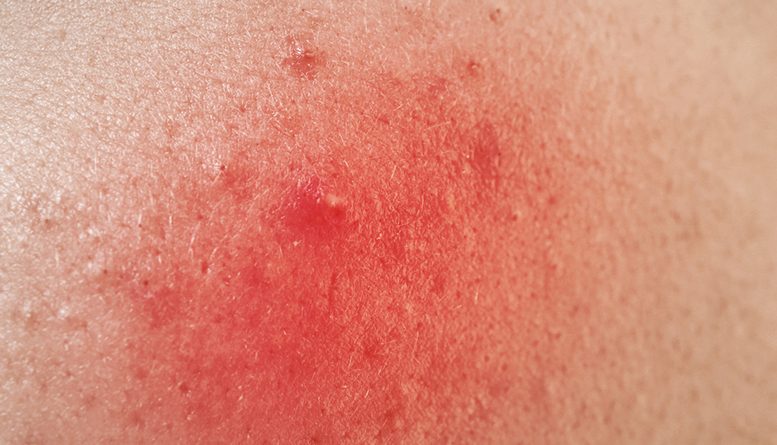Dermatitis is used to refer to a class of various skin conditions with distinct characteristics. In some cases, the medical terms dermatitis and eczema may be interchangeable, but they do not always refer to the same condition. While all the different types of dermatitis cause what can be defined as a rash, the type of skin irregularities each type of dermatitis brings on is distinctive nonetheless. Here is an overview of the three most common types of dermatitis: atopic, contact, and seborrheic dermatitis.
Atopic Dermatitis
Atopic dermatitis, also commonly referred to as eczema, is a chronic condition that is believed to be caused by a faulty immune system response. Research shows that those with a family history of allergic rhinitis or asthma are at an increased risk of developing atopic dermatitis. While atopic dermatitis develops early in life, people only begin to exhibit symptoms once they are exposed to triggers such as changes in weather, stress, and contact with cosmetics and self-care products. Atopic dermatitis symptoms usually go away and recur systematically.
Atopic dermatitis rash is usually accompanied by mild to very severe itching, which is aggravated by scratching. Scratching also increases the risk of an infection to which people with atopic dermatitis are inherently more susceptible. Pus-filled blisters that crust over may form, and excruciating fissures on the skin are not also not uncommon. Some of the most common areas of the body affected by atopic dermatitis include the face, the creases of the elbows, as well as the folds of the knees.
Contact Dermatitis
There are two sub-types of contact dermatitis, which are allergic contact dermatitis and irritant contact dermatitis. Each type of contact dermatitis is caused by the skin getting in contact with a substance to which it is sensitive or reactive. In allergic contact dermatitis, a sensitive immune system reaction is the culprit.
In irritant contact dermatitis, on the other hand, the skin reacts to being in contact with a substance due to its chemical composition (such as a product containing harsh chemicals) or simply because of frequent, repeated exposure to a harmless element. For instance, water can damage the outer layer of the skin on the hands due to over-washing.
The most common symptom of allergic contact dermatitis is the formation of a red, itchy, and painful rash at the site of contact with an allergen. Oozing sores may also develop and become crusty over time.
Similarly, irritant contact dermatitis also causes a red, itchy, and painful rash where the skin makes contact with a trigger substance. Patients may experience patches of dry skin that resemble burn marks.
Seborrheic Dermatitis
Seborrheic dermatitis, also commonly known as dandruff, typically affects the scalp but also targets other oil-secreting regions of the skin such as the face and chest. Its cause has been strongly associated with the excess of a fungus that is naturally present on the skin. When not on the scalp, it commonly appears on the eyebrows, eyelids, and the sides of the nose. Seborrheic dermatitis is characterized by patches of oily, yellowish, and often crusty flakes. Redness coupled with itching and some inflammation is also common.
Featured Image: Depositphotos/© belchonock




